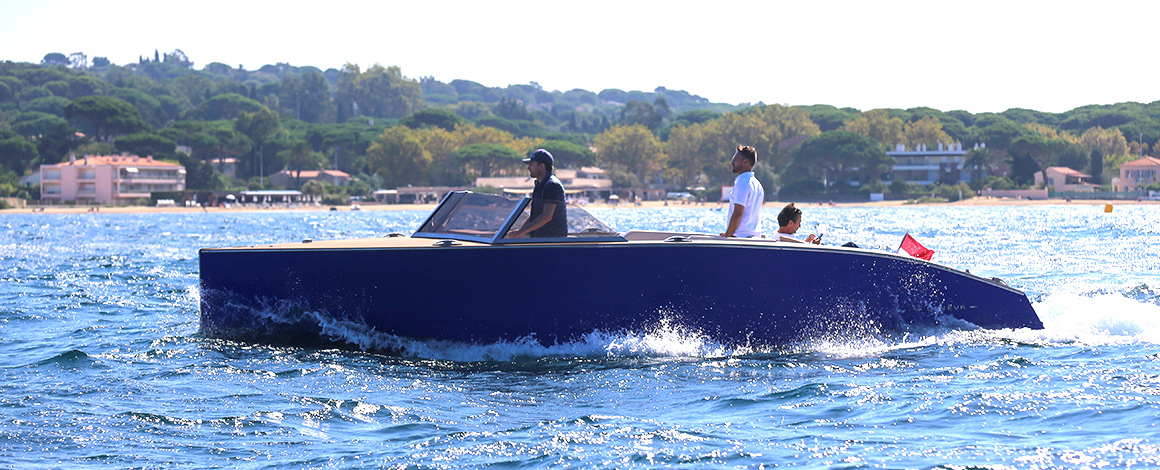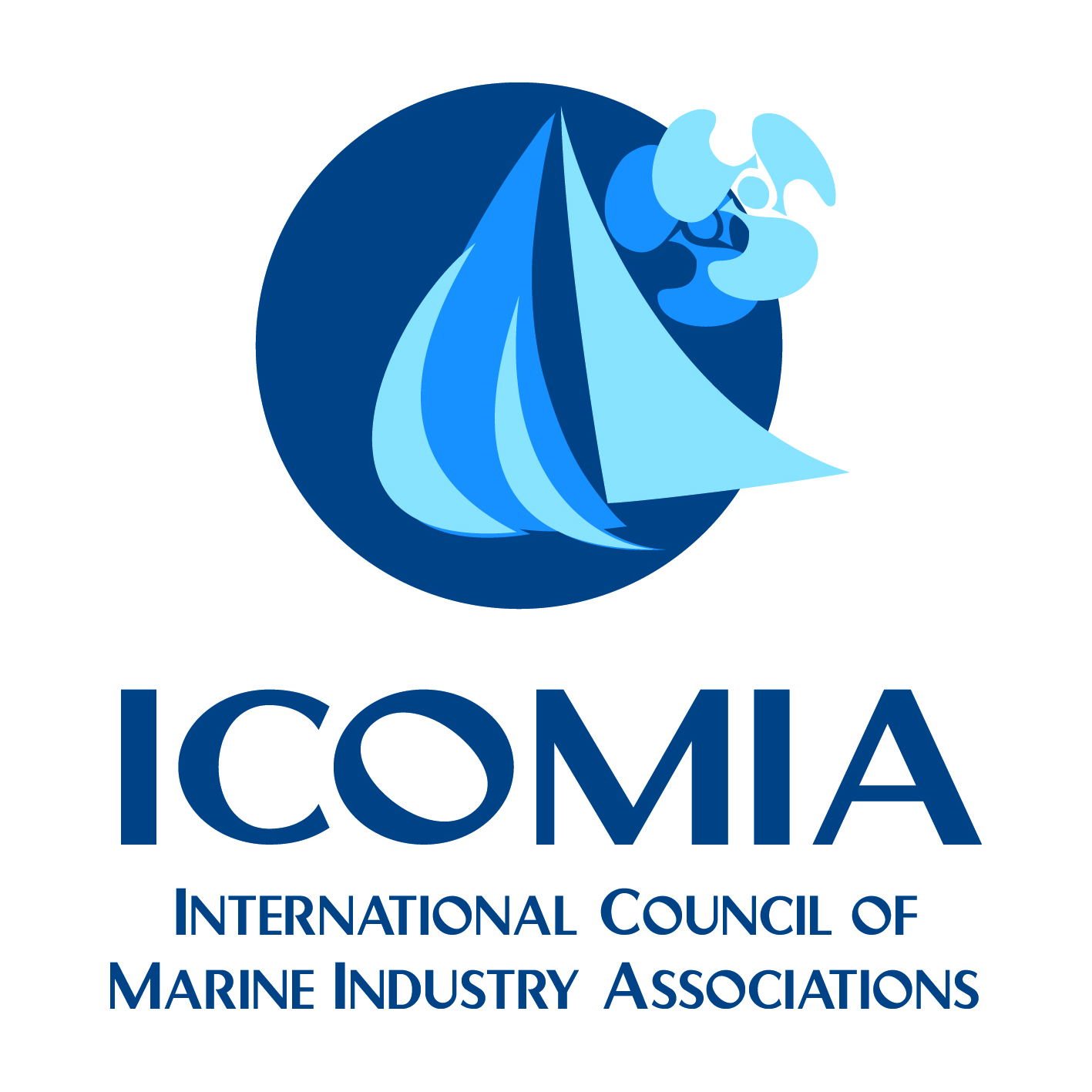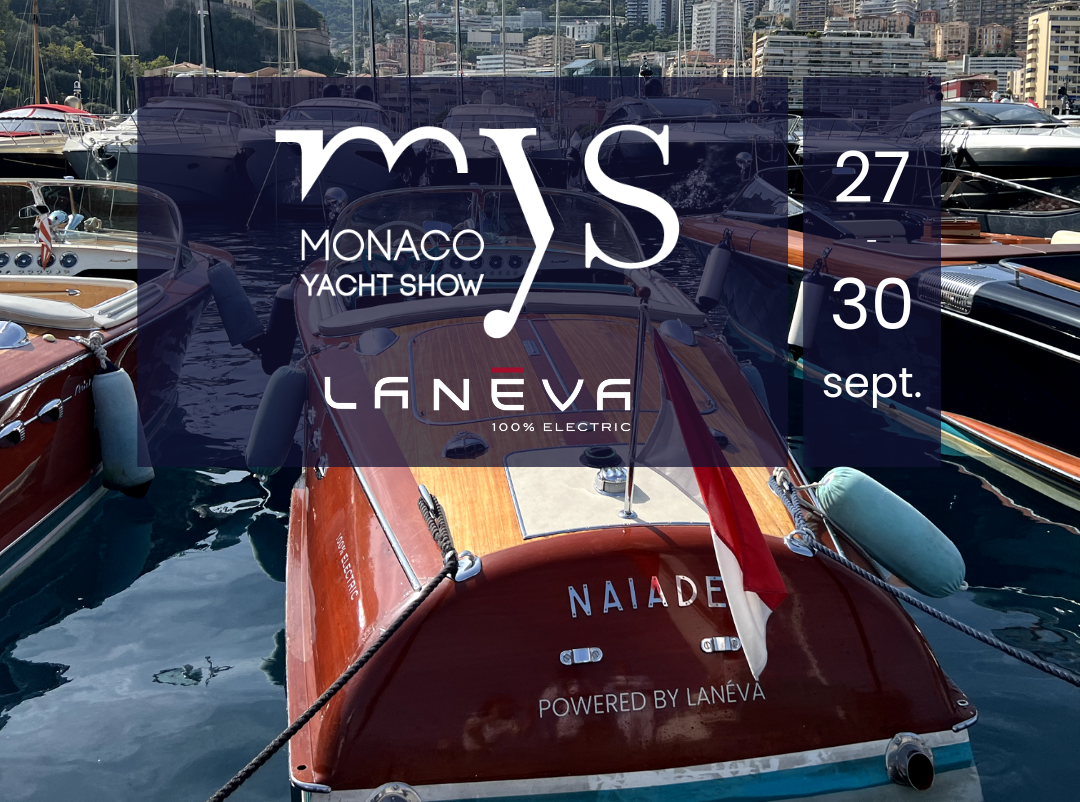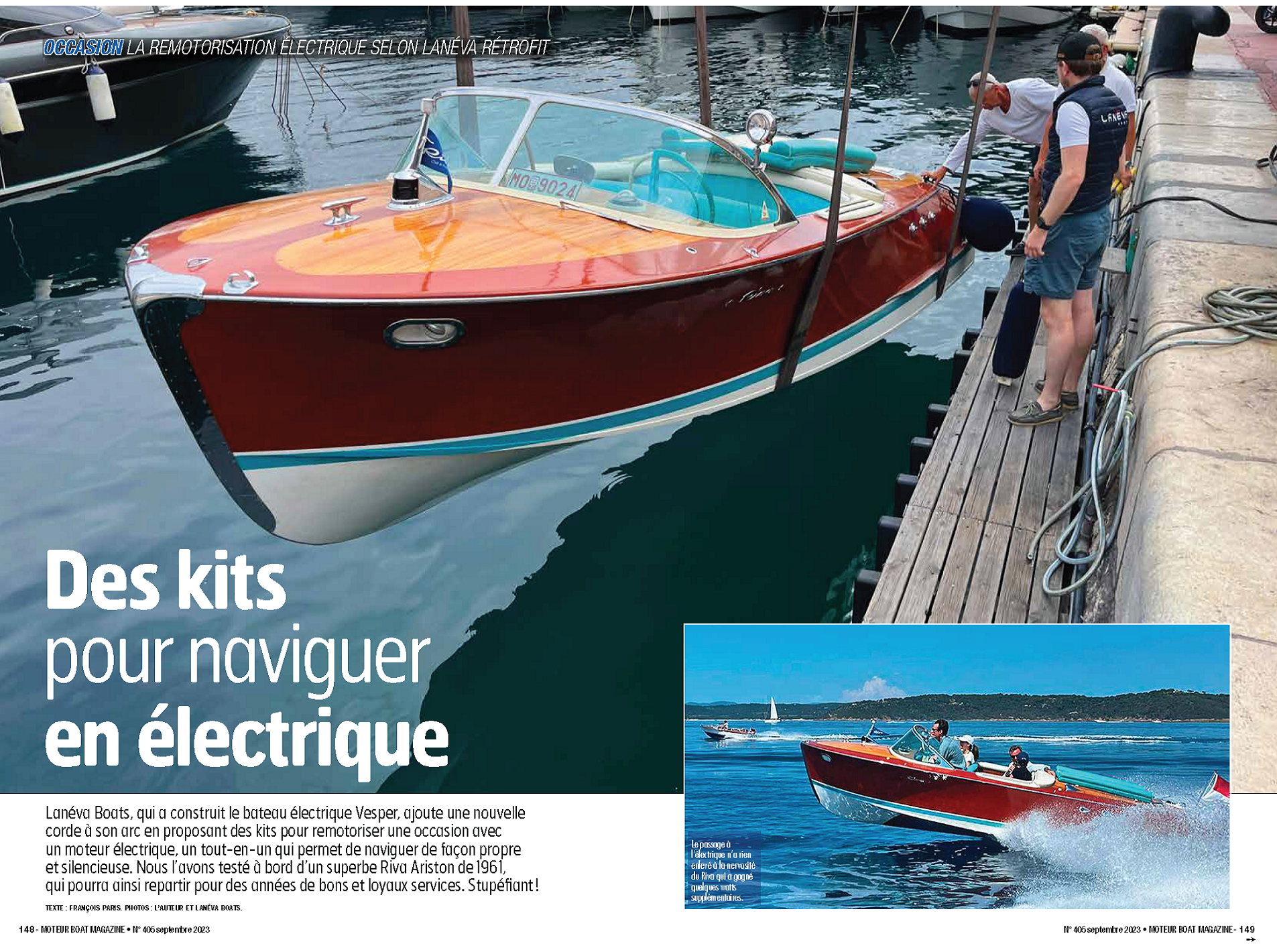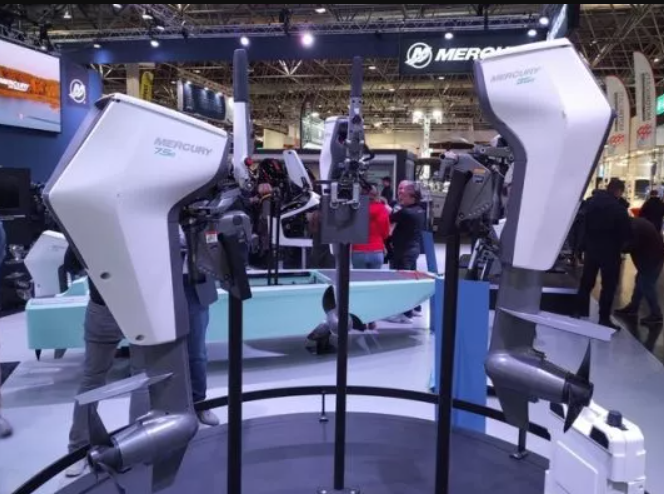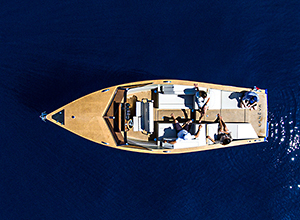Once merely considered as an auxiliary dinghy used for transportation, provisioning, and crew chores, the tender has evolved into being a key element of the superyacht life, be it as the first representation of a mothership, as a sports vessel, as a beach lander, or as a cruiser around small bays. With sustainability on the top of the yachting industry’s agenda, the move towards electric-propulsion tenders has accelerated, and the e-tender market experiences significant growth. In this article, we discuss ten insights provided by superyacht captains advising owners on the choice of a new tender. Some are certain that e-tenders are the obvious choice. Others require additional proof of the e-tender potential.
Performance
→ “Yacht tenders need speed, comfort and dryness over relatively short ranges and are, therefore, well-suited to being fitted with powerful automotive-based electric propulsion systems in a modern planing hull form.”
→ “They will prove to be a popular option for owners and guests when they reach the speed and range conventional tenders currently reach. Most owners would like a quiet tender but this consideration seems to come after speed and range.”
The most common uses of tenders in the size range of 9-11 meters include supply runs, owners and guests transfers from/to a marina, a beach or a neighbouring yacht. In such cases, tender rides are usually short and over small distances, meaning that they do not usually require speed or high range.
When it comes to watersport activities and day cruising purposes, tenders need nonetheless to fulfil certain requirements. In a previous article “A boat comparison”, we explain that, contrary to a petrol-powered vessel, an all-electric boat has greater traction and acceleration capacities due to the fact that an electrical engine provides instant torque even at low speed. Thanks to its twin engines, the Lanéva tender reaches a top speed of 28-30 knots and has a range of 40-45 nautical miles at a cruising speed of 15 knots.
In terms of manoeuvrability, a bow thruster is a key feature to a tender (even for the small-sized ones) in order to add greater control over the boat, especially when it rides alongside the mothership. Again, a Lanéva tender ticks the boxes as it is equipped with both bow and stern thrusters.
After all, when comparing the range of non-electric tenders falling in the same size category, we see that an electric tender, such as Lanéva, quite easily complies with the needs of its user.
Comfort
→ “E-tenders provide hugely enjoyable transport between yacht and shore. Without the fumes of fuel or exhaust, they allow the occupants to hold conversations at normal speaking levels, even at 30 knots.”
→ “I particularly believe the ‘silent running’ of such tenders will be a big attraction to owners.”
Those who have tried an electric boat will unanimously agree on the fact that electric propulsion offers an incomparable experience on-board: no fumes, no odours at the ignition of the motor, no vibrations, no noise -even during accelerations- but the chance to continue witnessing the beauty of nature at its best by moving around silently in a green manner, without compromising on comfort. After all, responsible boating doesn’t solely benefit the environment; it does enhance the experience of boaters who can enjoy the quietness of the vessel even if sitting next to the engine.
Access to restricted areas
→“If you own a small tender in many parts of Europe and the US, you face a growing ban on thermal engines.”
The negative impact that non-electric vessels have on aquatic environments by a variety of mechanisms is significant. This includes emissions and exhaust, propeller contact, turbulence from the propulsion system, waves produced by movement, noise, and movement itself. Sediment resuspension, water pollution, disturbance of fish and wildlife, destruction of aquatic plants, and shoreline erosion are just some of the major areas of concern.
An electric boat minimises and even removes a majority of these concerns.
Furthermore, and as pointed out in our previous article “A boat Comparison – electrical engine vs internal combustion engine”, a growing number of destinations, among which the most popular ones for superyachts, do not allow ICE boats to anchor near them and are becoming electric-only bodies of water. For instance, a diesel ban is planned in Spain’s Balearic Islands as of 2025. It is thus reasonable to expect that access to certain coastal and protected areas will be limited or prohibited in the future; not only in Europe (which is paving the way for the phase-out of fossil fuel vehicles) but overseas as well. In other words, there may be priority access for 100% electric vessels to some of the world’s most well kept secrets and beautiful spots, otherwise forbidden by other nuisance-driven vessels.
Sustainability
→ “There is no point buying a hybrid yacht and then having a diesel or gasoline tender on board.”
E-tenders are the response to an increasing sensitivity towards eco-sustainability, especially from the new generation of future superyacht owners who make low carbon footprint (and low emissions) a priority and who look into an eco-friendlier approach to yachting.
Moreover, initiatives such as the Yacht Environmental Transparency Index (YETI) and the Water Revolution Foundation confirm the strong commitment towards environmental innovation in the yachting world.
Although we note that the superyacht industry has made progress in the last five years to become a global eco-player, today, battery technology does not allow for superyachts to become 100% electric. However, steering towards alternative propulsion with a 100% electric tender is an easy step for captains and owners to begin their quest for an all-round green and responsible solution.
Having gone through stringent assessments performed by external independent experts and based on verified standards, Lanéva Boats is considered one of the most advanced sustainable dayboats on the market, having received the “Solar Impulse Efficient Solution” label. This positions Lanéva Boats as an eco-responsible choice for its users.
Such an award is greeted with great respect from those seeking an eco-friendly solution for the future as it is one of the first labels for positive impact businesses bringing together protection of nature and financial viability.
Design & custom-made
→ “In recent years, owners have begun to pay more attention to the design of tenders, seeing them as not just a method to travel between A and B, but also part of the whole journey.”
→ “Modern superyacht tenders and toys – even those from production builders – can offer a bewildering array of customisation, from colour schemes and upholstery to the latest in gadgets and electronics.”
By definition, a tender is the annex, the extension of a superyacht; it’s the first element guests get to see and interact with before boarding the mothership. Tenders are, in other words, an introduction to the type of journey guests will expect to have on the yacht.
For this reason, tenders should match the level of attention to detail and luxury of that of the flagship. This is why Lanéva Boats made it a point to not compromise on all aspects of the design in order to offer the ultimate experience of e-boating.
Hence, Lanéva boats are the epitome of all electric, custom-made luxurious small vessels and tenders. With such values as sustainability, craftsmanship, respect for nautical traditions and construction techniques at the core of the brand concept, Lanéva incessantly searches for top-notch skills and savoir-faire to equip its boats with exceptional materials and finishes.
Aiming at such a level of excellence, Lanéva can adapt and personalise its boats to the needs of its clients, also offering all the necessary and efficient technology to ensure a safe and comfortable journey on the water. Not to mention the highest level of in-service support and aftersales care that comes with a custom-made tender.
Multi-use
→ “In recent years, owners have begun to pay more attention to the design of tenders, seeing them as not just a method to travel between A and B, but also part of the whole journey.”
→ “Primarily, they are utility vessels but they do have the propensity to evolve into owners’ tenders because they are so comfortable; they become the high-end Range Rovers of the sea.”
Given that today’s technologically advanced tenders have come a long way since the very beginnings of their use in the superyacht world, they no longer merely serve a purpose of transporting guests to beaches and jetties. In fact, some studies show that tenders are primarily used for leisure time (by guests – 26.5%) and for watersports (20.6%), whereas transfers represent only 5.9% of their usage.
Tenders have transformed themselves into far more than just being a shuttle for ports and marinas; they address the matter of flexibility that is desired and sought-after by today’s discerning clientele. Hence, tenders have become leisure day boats, allowing boaters to pursue recreational activities.
Lanéva’s electric tenders are no exception; they present such versatile features and transforming capabilities that owners, guests and crew alike can use them in a larger number of ways than one could imagine.
Reliability of electric propulsion
→ “Reliability in a yacht tender is paramount; it can be the coolest, most advanced boat on the water but if it doesn’t work at that critical moment when your guests want to get ashore it is next to useless.”
→ “Electric power rapidly translates into fast acceleration, superior controllability and stress-free arrival and departure.”
With some feedback from the car industry, several reviews confirm that electric engines are more reliable than fossil-fuel engines. This is due to two main reasons: first, there are far less moving parts in an electric engine, meaning that logically there are lesser chances of faults to occur. Second, and as we’ll explain later on, electric batteries have a longer life cycle.
Regarding propulsion, Lanéva uses an axial flux motor technology with unrivalled power density and a plug & play easy connection. The boats are equipped with a smart navigation interface which indicates in real time the level of batteries’ consumption for each engine, both on the cockpit dashboard or on the owner’s phone. At all times, one can know exactly how much energy is available for a busy day at sea. In addition, Lanéva boats’ engines can work separately in case of a breakdown to ensure redundancy of the system. There’s even more to it: upon demand, Lanéva’s service team can access the system, even when the client is at sea, to make a remote diagnostic and/or repair.
Battery life cycle & durability
→ “Currently, the battery life and achievable speed is a big limiting factor.”
After value for money, ease of maintenance and durability come as equally important to the eyes of a tender’s owner. Two characteristics that can be found in the use of electric-powered tenders which happen to be cheaper and easier to maintain.
Contrary to common perception, the batteries in electric vehicles don’t degrade over time. Tesla made some tests on its batteries, which reveal that “batteries lose about 1% of capacity every 30,000km (18,750 miles).” One may argue that those results are specific to Tesla’s batteries. Yet, this serves to prove the scalability of the overall battery technology and the constant evolution of their performance.
As hinted at earlier, e-tenders’ batteries have a long lifecycle. For instance, Lanéva uses Lithium Polymer Batteries based on the Nickel Manganese Cobalt (NMC) chemistry, and the cells are those used for military applications. It is worth mentioning that “NMC is the most successful Li-ion system and suitable for EV powertrains. These batteries are currently in high demand given the high specific energy and excellent thermal characteristics. (…) NMC has been used by many EV manufacturers, including Nissan Leaf, Chevy Volt and BMW i3.”
Lanéva’s batteries have a life of about 2000 cycles each, which is equivalent to about 10 years of usage. So, if we take into consideration that the frequency of external servicing for fuel-powered tenders reaches 58.9% in between 6 to 18 months, and that the average frequency of replacing operational tenders on board is about 2 to 5 years, we can affirm that an electric tender, such as a Lanéva boat, appears to be a safer and cost-efficient investment in the long-run, provided that the right level of overall maintenance of the tender (i.e. inside-out cleaning after use in water, anti-corrosion treatments, etc.) is done.
MORE BENEFITS
Safety & simplicity in charging on-board
One of the most apparent benefits of an electric tender is the possibility to charge it in the garage of its superyacht by using free energy and resources provided for directly from the yacht.
The generator on board charges the tender, meaning there’s no need to store toxic and highly flammable substances in the tender garage such as petrol or diesel, as required with traditional tenders.
Additionally, the generator won’t be wasting its power when continuously on, as it can be used to charge the superyacht tenders’ batteries. This in turn implies efficiency in terms of charging, as the constantly powered generator uses the energy that otherwise would have gone to waste.
Weight and lifting
→ “I believe that battery technology is still about 10 years away from being ready for this application. Hybrid might be an option but the most important aspect of this is that the battery weight, in addition to the weight of the tender, will make an upgrade of all the lifting arrangements necessary unless this is considered from the start on a new build.”
As efficient electric motors are very light, they largely compensate for the weight from the batteries. For instance, a Lanéva boat’s electric motor weighs 42kg, when the batteries altogether weigh about 900 kg, for a lightweight of the boat reaching about 3,2 tonnes. The crane of most superyachts for a similar tender size is therefore already suitable for the Lanéva all-electric tender.
Another important point regarding weight and lifting is that the weight of an empty battery is the same as that of a full battery. This allows the crew not to worry about the difference in weight when handling the tender.
Summary
To conclude, just as with any other vehicle or device, it is not just about making something better and providing charging infrastructure; it is about seeing a change of the business model in the yachting industry, something that electric tenders such as Lanéva Boats has strongly embraced.
Electric tenders satisfy the increased demand for quiet, clean and efficient alternatives to the traditionally powered superyacht tender. As a captain puts it: “the option of an electric tender provides a sustainable bolt-on to superyacht ownership and a dramatically different experience to the gas-guzzling tender.”
Societal attitudes toward sustainability are moving forth quickly, and yacht users expect the best of both worlds: luxury, comfort and green credentials.
While port requirements for limited emissions are becoming more stringent as technologies advance with yachts becoming greener, the number of emission control areas (ECA) and environmental regulations are also increasing.So, what are you waiting to experience with Lanéva Boats? Just book the date of your choice for the 2021 season.



